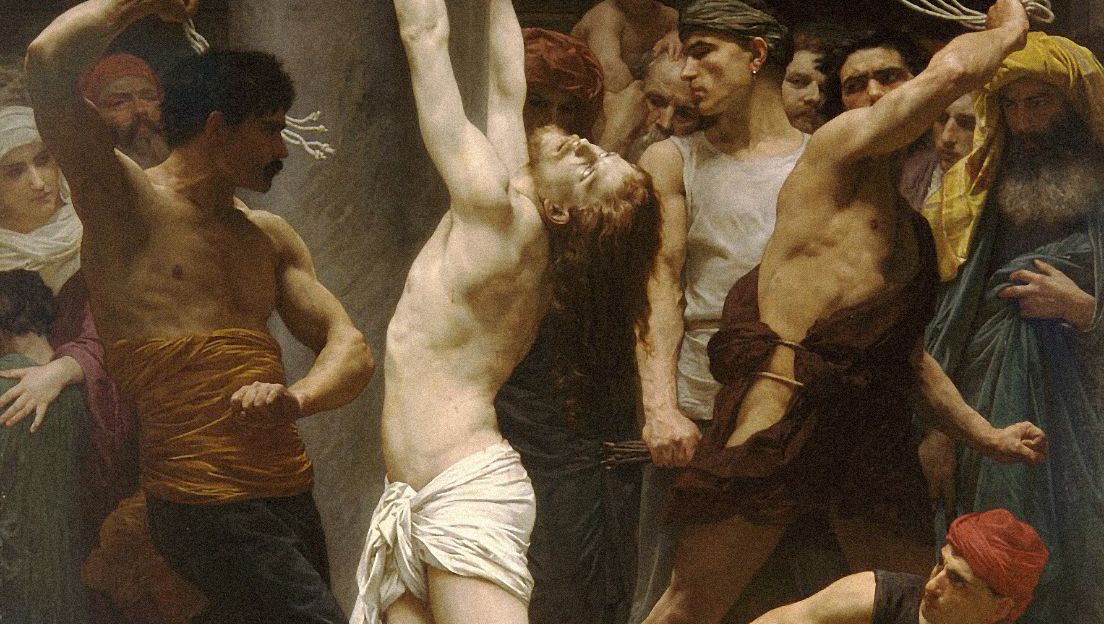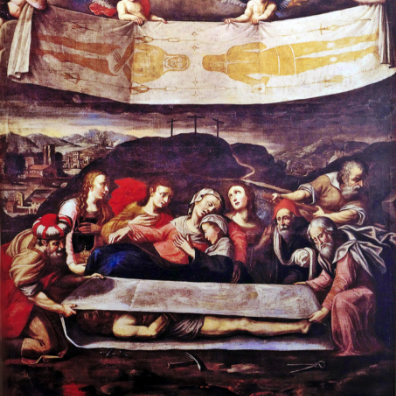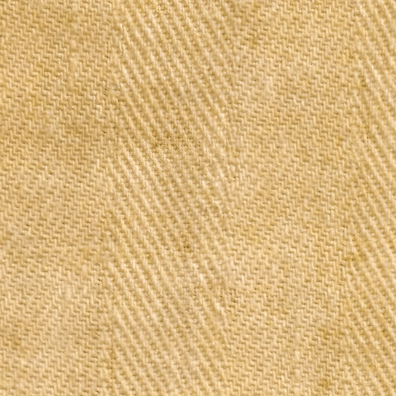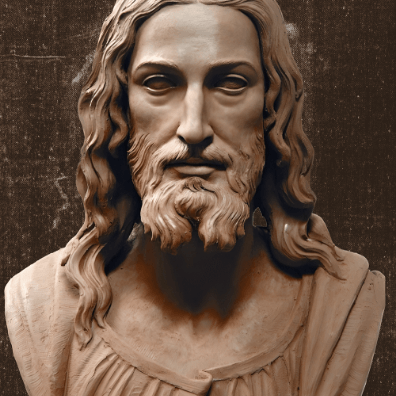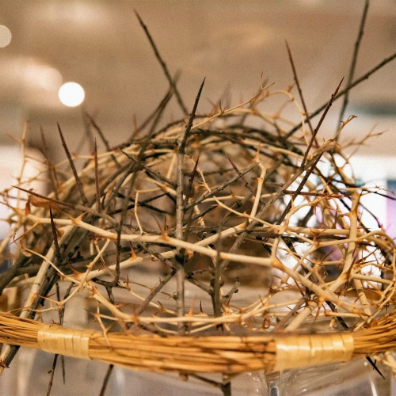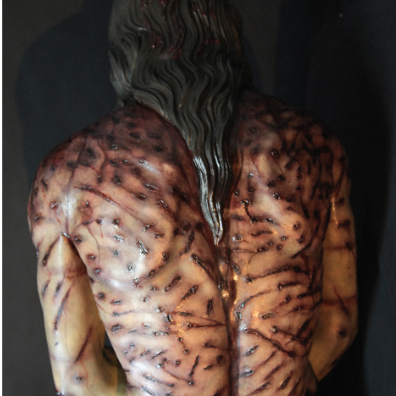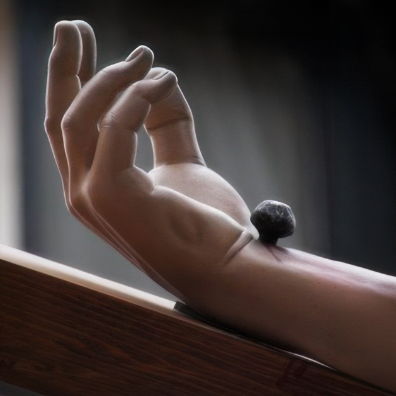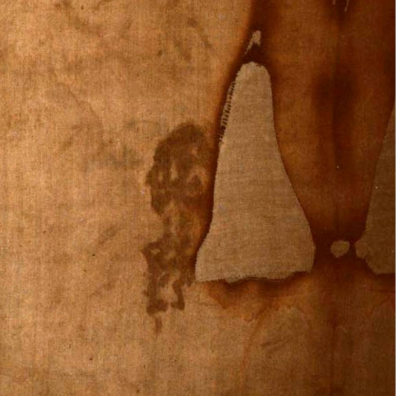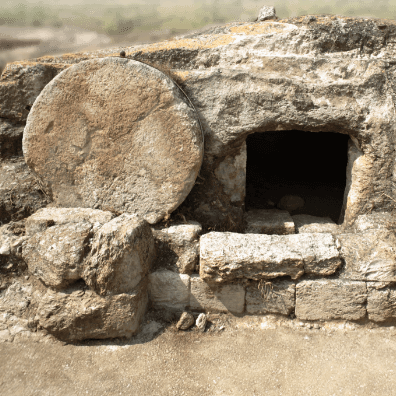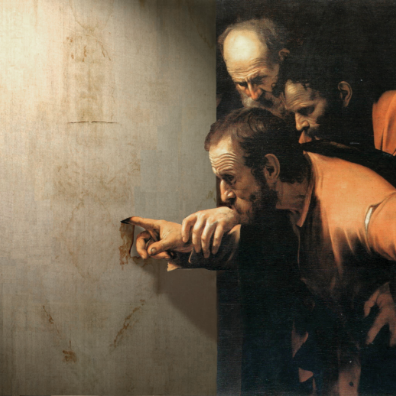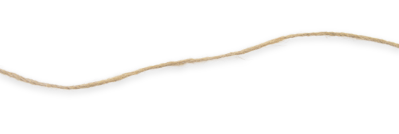- The Shroud shows us what scourging was like at the time of Jesus.
- There are over 360 wounds covering the man’s body, front and back.
- The Romans scourged people with a flagrum. Flagrums had leather straps with pieces of metal, glass, or bone at the tips.
- The scourge wounds on the Shroud are identical to the tip of the Roman flagrum.

